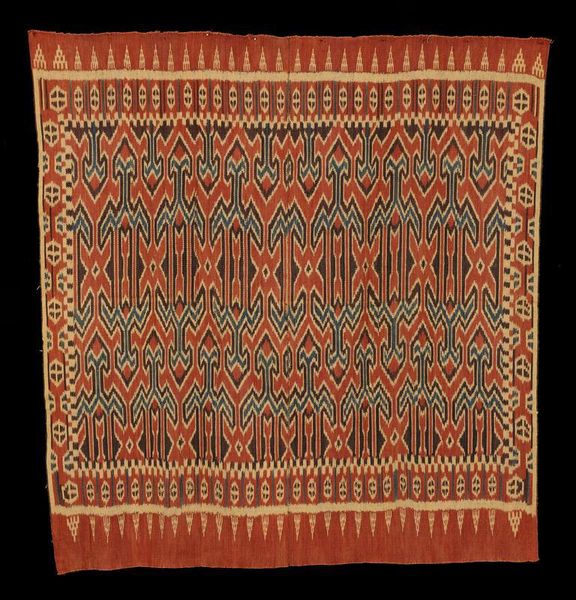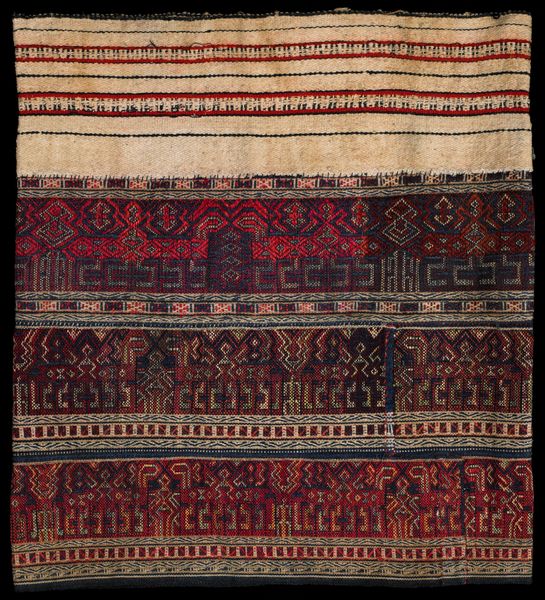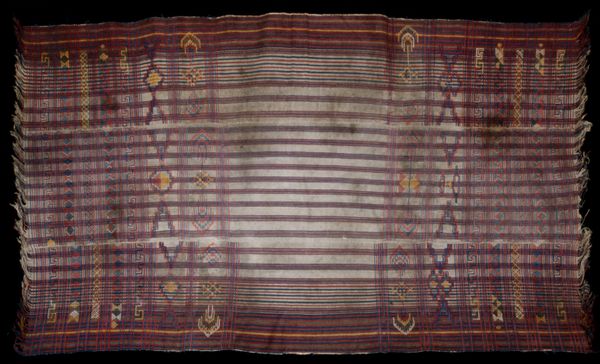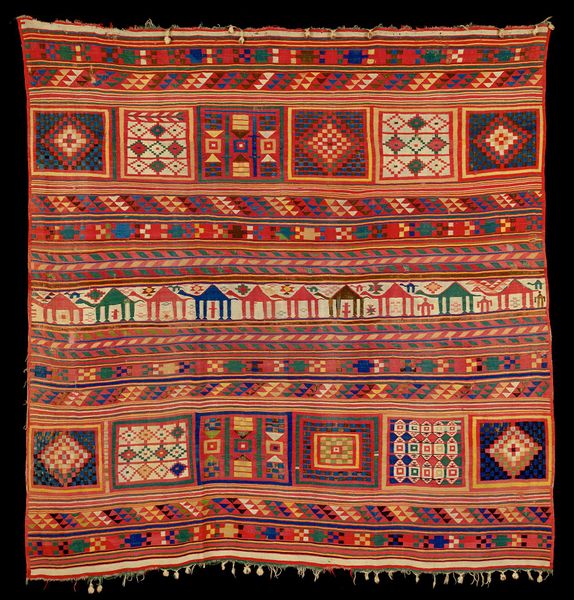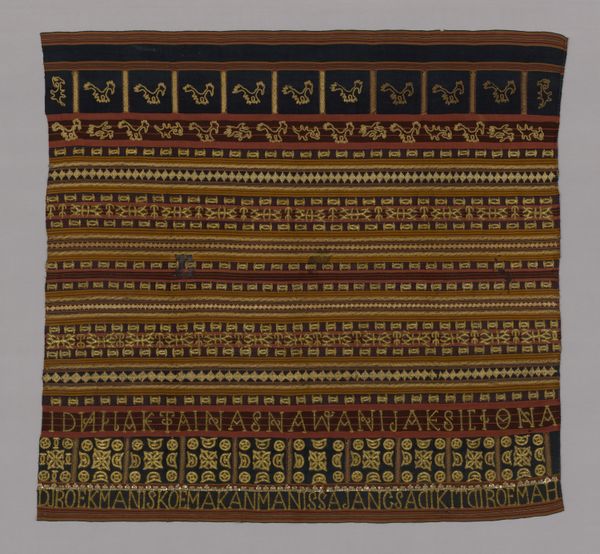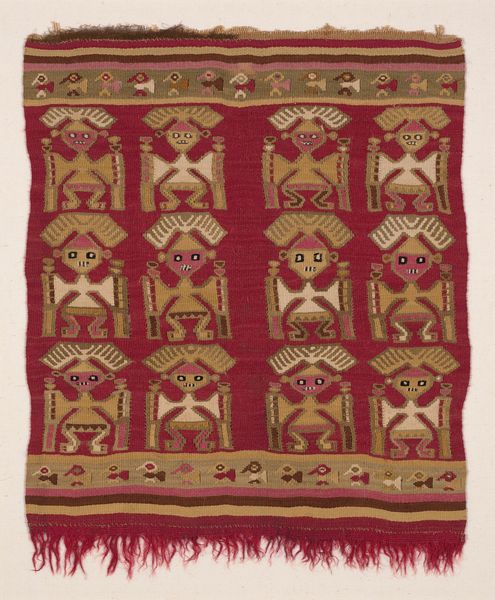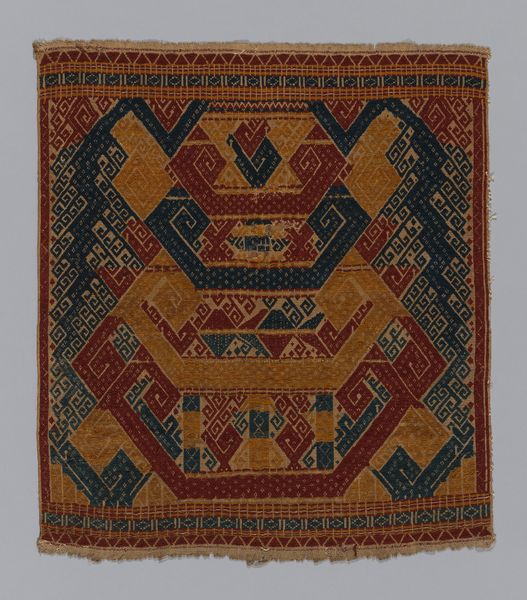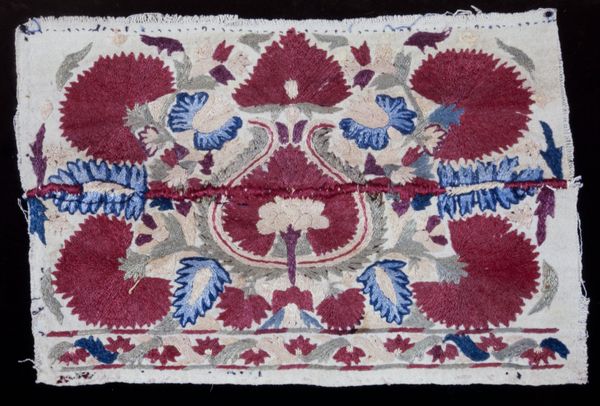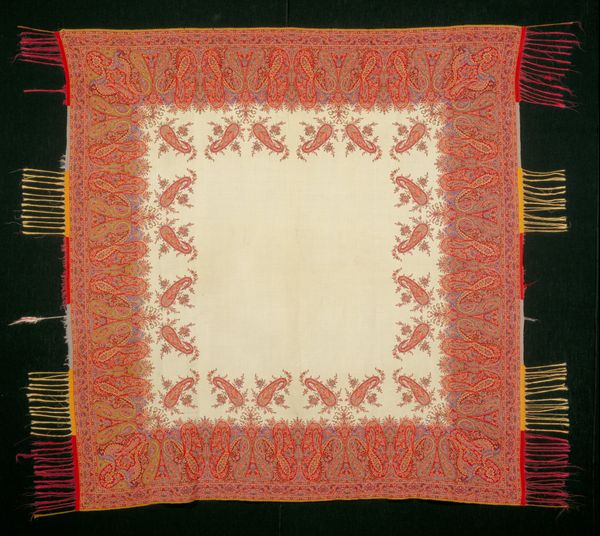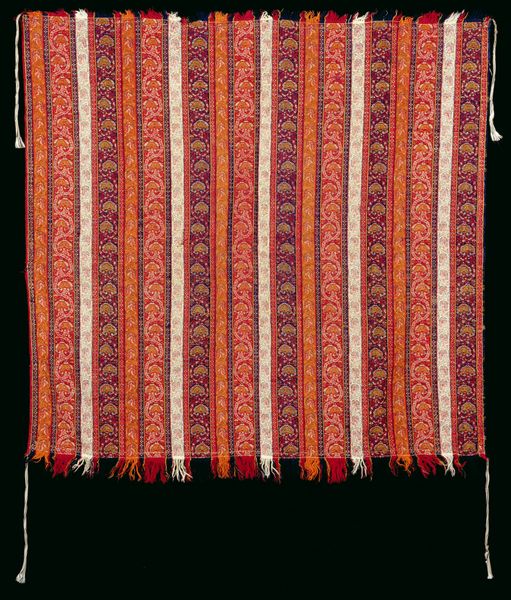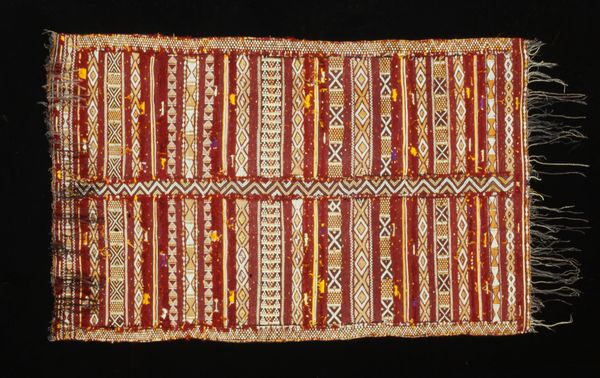
fibre-art, textile
#
pattern heavy
#
fibre-art
#
loose pattern
#
pattern
#
asian-art
#
textile
#
geometric pattern
#
abstract pattern
#
repetition of pattern
#
pattern repetition
#
layered pattern
#
funky pattern
#
combined pattern
Dimensions: 68 1/4 x 133 1/16 in. (173.36 x 337.98 cm) (without hanging loops)
Copyright: Public Domain
Curator: Looking at this "Tush kyiz (hanging)" from around the mid-20th century currently held at the Minneapolis Institute of Art, I'm immediately struck by how warm and inviting the colour palette is. The repetitive patterns create an intriguing rhythm across the textile, yet also a little chaotic? Editor: Indeed. We know this piece employs cotton, transformed via processes integral to nomadic cultures of Central Asia. Examining the means by which the artisans developed the skills for resist-dyeing of this intricate pattern is key. Do you notice the various patterns within the larger scheme? The interplay between geometric abstraction and natural forms, maybe flowers or stylized animals is prominent, no? Curator: Yes! Considering its social history, "tush kyiz" hangings often acted as emblems of identity and status. These elaborate textiles usually played central roles during celebratory and ritualistic moments, acting almost as proclamations of tribal belonging, so, would a viewer at the time pick that up easily? Editor: The symbolism is definitely intriguing from a material standpoint. The choice of cotton indicates specific trade routes and economic exchanges present in Central Asia at the time, no? It demonstrates a tangible connection to the movement of goods and labour inherent to the production of this art. These hangings provided the maker some sort of material affirmation. Curator: Absolutely, and beyond the access to cotton, consider how these textiles also shaped interior spaces, establishing norms, social interactions, and signifying certain meanings about power dynamics during festivities. Editor: The "pattern-and-decoration" aspects really highlight what artisans found of worth around them. Do you find any reference that demonstrates that theory? The repetitive and labour-intensive nature, too, invites reflection on gendered labor practices and societal values attributed to skilled handicrafting, since they reflect dedication and time consuming works. Curator: It truly makes you consider the socio-cultural factors inherent to the design motifs. It gives the viewer the possibility of understanding that art wasn't a vacuum during that period, or any, for that matter! Editor: I agree, understanding that history enriches our experience, encouraging discussions around economics, labor, value systems, and of course… the very materiality from the piece! Curator: Definitely an inspiring piece with lots to reflect on. Editor: Indeed, something very worthy to ponder for those with material and art history inclinations.
Comments
No comments
Be the first to comment and join the conversation on the ultimate creative platform.
